Or search by topic
Number and algebra
Geometry and measure
Probability and statistics
Working mathematically
Advanced mathematics
For younger learners
Keep Your Distance Poster



- Problem
- Student Solutions
The possible arrangements are:
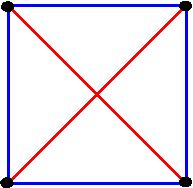
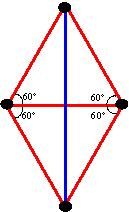
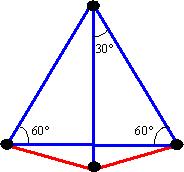
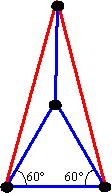
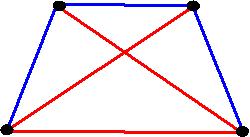
(plus the example given on the poster)
Are you sure that you have them all?
Start with two points some distance apart (red distance). 
Then there are three options for the third point:
-




 the third point is a different distance from the first two points
the third point is a different distance from the first two points  the third point is the green distance from one of the first two points, but the first distance (red) from the other. But actually, this is the same as option 1, if we just relabel the bottom right point as the third point!
the third point is the green distance from one of the first two points, but the first distance (red) from the other. But actually, this is the same as option 1, if we just relabel the bottom right point as the third point! the third point is the red distance from the first two points.
the third point is the red distance from the first two points.
If we use arrangement number 1, the fourth point could be:
a) the green distance from the third point and the red distance from the other two
b) the red distance from all of the 3 existing points
c) the red distance from the third point but the green distance from the other two
d) the green distance from all of the 3 existing points
e) different distances from the first two points and the red distance from the third
f) different distances from the first two points and the green distance from the third
a) Equilateral triangle
Equilateral triangle
b) Isosceles triangle
Isosceles triangle
c)  Square
Square
d)  Rhombus
Rhombus
e) Trapezium
Trapezium
f)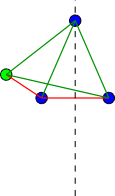 Kite
Kite
If we start with option 3 instead, then:
a) the fourth point is the same distance from all 3 of the points - equilateral triangle
b) the fourth point is the red distance from one of them and the green distance from the other two- isosceles triangle
c) the fourth point is the red distance from two of them and the green distance from the other one - rhombus
So those are all of the possible shapes.

